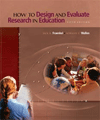Essential Characteristics of Single-Subject Research - Single-subject research involves the extensive collection of data on one subject at a time.
- An advantage of single-subject designs is that they can be applied in settings where group designs are difficult to put into play.
Single-Subject Designs - Single-subject designs are most commonly used to study the changes in behavior an individual exhibits after exposure to a treatment or intervention of some sort.
- Single-subject researchers primarily use line graphs to present their data and to illustrate the effects of a particular intervention or treatment.
- The basic approach of researchers using an A-B design is to expose the same subject, operating as his or her own control, to two conditions or phases.
- When using an A-B-A design, (sometimes called a reversal design), researchers simply add another baseline period to the A-B design.
- In the A-B-A-B design, two baseline periods are combined with two treatment periods.
- The B-A-B design is used when an individual's behavior is so severe or disturbing that a researcher cannot wait for a baseline to be established.
- In the A-B-C-B design, the "C" condition refers to a variation of the intervention in the "B" condition. The intervention is changed during the "C" phase typically to control for any extra attention the subject may have received during the "B" phase.
Multiple Baseline Designs - Multiple-baseline designs are used with it is not possible or ethical to withdraw a treatment and return to baseline.
- When a multiple-baseline design is used, researchers do more than collect data on one behavior for one subject in one setting; they collect on several behaviors for one subject, obtaining a baseline for each during the same period of time.
- Multiple-baseline designs also are sometimes used to collect data on several subjects with regard to a single behavior, or to measure a subject's behavior in two or more different settings.
Threats to Internal Validity in Single Subject Research - Several threats to internal validity exist with regard to single-subject designs. These include the length of the baseline and intervention conditions, the number of variables changed when moving from one condition to another, the degree and speed of any change that occurs, whether or not the behavior returns to baseline levels, the independence of behaviors, and the number of baselines.
Controlling Threats in Single-Subject Studies - Single-subject designs are most effective in controlling for subject characteristics, mortality testing, and history threats.
- They are less effective with location, data collector characteristics, maturation, and regression threats.
- They are especially weak when it comes to instrument decay, data-collector bias, attitude, and implementation threats.
External Validity and Single-Subject Research - Single-subject studies are weak when it comes to generalizability.
- It is particularly important to replicate single-subject studies to determine whether they are worthy of generalization.
Other Single-Subject Designs - Variations on the basic designs discussed in this chapter include the A-B-A-C-A design; the A-B-C-B-C design; and the multi-probe design.
|



 2003 McGraw-Hill Higher Education
2003 McGraw-Hill Higher Education